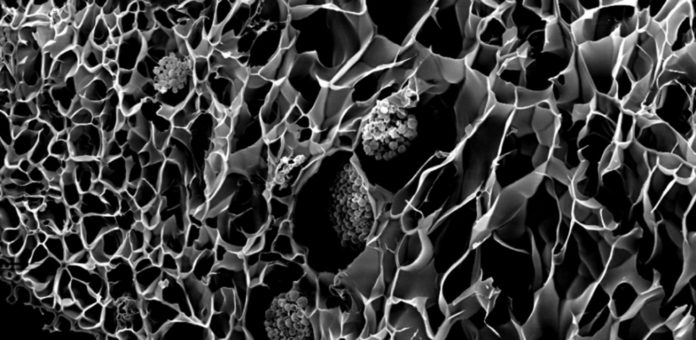Corals have evolved as optimized photon augmentation systems, prompting space-efficient microalgal growth and outstanding photosynthetic quantum efficiencies.
Scientists at the University of Cambridge are looking for methods to copy and mimic these strategies from nature for commercial applications.
To do so, scientists have developed 3D printed coral-inspired structures that can grow dense populations of microscopic algae, pave the way towards new bio-inspired materials and their applications for coral conservation.
Scientists 3D printed coral structures using a rapid 3D bioprinting technique. They then used the structures as incubators for algae growth. They tried different kinds of microalgae and discovered growth rates were 100x higher than in standard liquid growth mediums.
The technique can reproduce detailed structures that mimic the complex designs and functions of living tissues. Furthermore, it can print structures with micrometer-scale resolution in just minutes.
Co-senior author Professor Shaochen Chen, from UC San Diego, said, “This is critical for replicating structures with live cells. Most of these cells will die if we were to use traditional extrusion-based or inkjet processes because these methods take hours. It would be like keeping a fish out of the water; the cells that we work with won’t survive if kept too long out of their culture media. Our process is high throughput and offers really fast printing speeds, so it’s compatible with human cells, animal cells, and even algae cells in this case.”
Co-senior author Dr. Silvia Vignolini, also from Cambridge’s Department of Chemistry, said, “We developed an artificial coral tissue and skeleton with a combination of polymer gels and hydrogels doped with cellulose nanomaterials to mimic the optical properties of living corals. Cellulose is an abundant biopolymer; it is excellent at scattering light, and we used it to optimize the delivery of light into photosynthetic algae.”
The team used an optical analog to ultrasound, called optical coherence tomography, to scan living corals and utilize the models for their 3D printed designs. The custom-made 3D bioprinter uses light to print coral micro-scale structures in seconds. The printed coral copies natural coral structures and light-harvesting properties, creating an artificial host-microenvironment for the living microalgae.
First author Dr. Daniel Wangpraseurt, a Marie Curie Fellow from Cambridge’s Department of Chemistry said, “By copying the host microhabitat, we can also use our 3D bioprinted corals as a model system for the coral-algal symbiosis, which is urgently needed to understand the breakdown of the symbiosis during coral reef decline.”
“There are many different applications for our new technology. We have recently created a company, called mantaz, that uses coral-inspired light-harvesting approaches to cultivate algae for bioproducts in developing countries. We hope that our technique will be scalable so it can have a real impact on the algal biosector and ultimately reduce greenhouse gas emissions that are responsible for coral reef death.”
Journal Reference:
- Bionic 3D printed corals. DOI: 10.1038/s41467-020-15486-4
